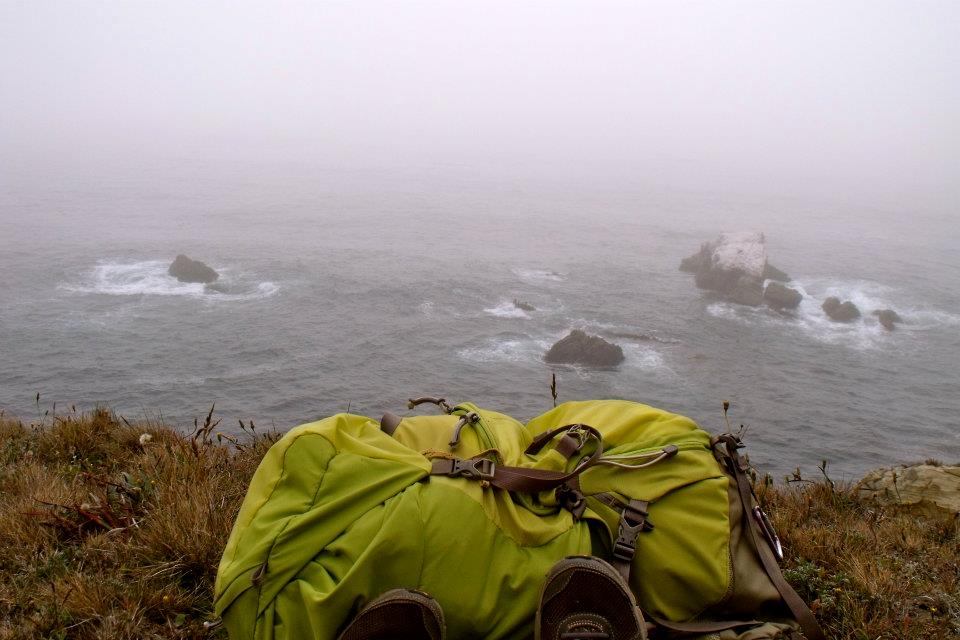Backpacks differ in quality, durability, functionality, size and weight so picking a pack simply because it looks good is can end up being a huge mistake. For one, a good pack is an investment and second, you don’t want to carry an uncomfortable backpack while traveling that was not designed for your body. It pays to have a comfortable pack that you enjoy using.
When you’re in the market for a new backpack, there’s a list of things to consider to so that you have maximum comfort. Most importantly, look for a backpack that is sized for your body, is breathable, sturdy, has comfortable hip and shoulder padding and provides easy and adequate storage access.
Things to check for when choosing a pack:
- Proper size
- Volume
- Breathability
- Internal frame
- Hip padding
- Shoulder padding
- Sternum Strap
- Lockable Zippers
- Ventilation
Size of the Backpack
The size of your backpack can make or break the ease of your trip. Take a trip to your local REI or other outdoor store and ask to get sized.You can do this at home with a friend, but by doing it in the store, you will get a better idea of the size of the pack.
With a tape measure, size the length of your torso. Measure by starting at the tip of your spine down to your iliac crest. Generally you can use that measurement to determine your pack size, but sizing does differ across brands.
Extra Small: Up to 15-1/2 inches tall (up to 39 cm)
Small: 16 – 17 1/2 inches tall (40 – 45 cm)
Medium: 18 – 19 1/2 inches tall (46 – 50 cm)
Large: 20 inches and up (51 cm and up)
Backpack sizes for women are slightly different from men’s sizes as they are a bit more narrow at the shoulder and have a more fitting hip-belt.
Ideally, your backpack should hold at least 30 lbs. You can test the backpack at the outdoor store by stuffing it with 30 lbs of sand bags. Proper weight distribution is important so that your pack doesn’t wear you out.
Another factor to consider when picking the right pack are the types of trips you plan on using it for. Are you backpacking for fives months through South America or are you taking it on 3 night trips in through a portion of the Pacific Crest Trail?
The longer your trip, the bigger pack you’ll need, but to a limit. The bigger your pack is, the more you’re likely to over pack with unessential items. Be critical on what you’re packing and whether you will actually need it. You want to avoid any extra items.
For long extended back country trips that you have to pack all your food and gear, you will need a pack on the larger side of things. If you are traveling with the backpack (not in the woods), you don’t necessarily need all that extra space–unless you plan on buying lots of souvenirs or plant to bring a tent and sleeping bag. I prefer to pack light and do laundry more often than lugging around an extra 10 lbs of dirty clothes when I want to take the long route to the hostel through town.
Typical capacity based on trip length:
Day or overnight (1-2 nights) 20-50 liters
Weekend (2-3 nights) 50-60 liters
Multiday (2-5 nights) 60-80 liters
Extended (5+ nights) 80 liters
Padded Hipbelt
Since the majority of your pack weight will be sitting on your hips, you want to make sure that your hip-belt is comfortable and not agitating. The padding will ease the heavy weight pressing down onto your hips and will make it the weight feel much more comfortable that without the padding. Note: some super light packs skimp on padding, so make sure it’s comfy and worth the compromise of saving weight.
Internal Frame
Internal frames are the types of backpacks that have the frame hidden within the pack. You only need an external frame pack if you are hiking in the wilderness and plan to lug supplies, according to Gerri, an outdoor expert from REI Arcadia informed me of. External frames are also heavier and made of metal whereas internal frames are made out of a lightweight carbon fiber or aluminum which makes it more comfortable to move around with.
Lockable Zippers
In case you can’t stash away your backpack in a locker, then locking your pack with the zippers is the next best thing to making sure your personal items stay safe. You should neverleave your pack out in the open, but if you do be sure to take all valuables and passport with you.
Material
Though more expensive, you can never go wrong with a waterproof backpack. You never know when Mother Nature will decide to downpour. Nothing is worse than having a backpack soaked through with rainwater. If your pack isn’t water proof, you can purchase a rain cover fitted for the size of your pack.
Accessibility
Aside from the main compartment, an important feature of the pack is whether it has accessible compartments to store some of your. This way, you don’t have to unpack the entire pack to get to something you need. Features like side pockets for your water bottle and zipper compartments for thing for your phone or snacks are things to consider.
Ventilation
A backpack with good ventilation will allow for airflow so sweat can dry quicker during your long hours of walking with your backpack on. While sweating is not so much a huge issue, it can help prevent getting chilled during your cool down and prevent you from getting a rash.
Cost
A good backpack that fits your needs can cost anywhere from $100 to $300, but the most expensive doesn’t mean the best. You need to make sure that you look for a pack that fits your specific needs and have the as many important features as possible.
My Pack:
Gregory Ventilated Backpack Women

I used the Gregory Jade to backpack trails for days as well as for travel on vacation. When I use it to travel, I tend to over pack it with two weeks worth of clothes including tennis shoes and sandals, but is always a perfect fit.
It also fits perfectly as a carry on when packed efficiently. It’s a very comfortable backpack and being more on the petite end I found it to be easy to haul around for hours and miles. I plan to use this backpack for years to come and create more memories with it. One of the many features I like about this pack is the inner pocket I use to store my passport and important documents. With that storage space, I don’t have to worry about someone trying pickpocket them. I also like that the hip straps have zipper compartments that I can keep some cash in or my phone in without having to stop and look for them in other parts of my bag.
Rand’s Packs:
Osprey Atmos 50

Comfortable, light, and durable. What more can you ask for in a pack? I have taken my Atmos 50 on six different multiple month/country trips and it hasn’t faltered. The storage layout is nice with the two large vertical zippered pockets on the front and it also has a large main compartment. Your back will thank you on hot and humid days abroad because the mesh and suspension frame allows cool air move between you and the pack. For me the size is perfect, when it’s fully packed before a trip there is just enough room for picking up some unique treasures along the way.
The North Face Base Camp Duffel
Although not technically a backpack, this is one of my favorite travel bags. It is perfect for hostel-to-hostel traveling because you can lug it on your back with the straps, or you can carry it as a duffel for short jaunts. The bag is absolutely bomb proof and fairly water-resistant (just no water-proof zippers) because the material used is similar to what white water rafts are made from.
It will keep your goods dry when your bag gets thrown on top of the local bus, back of the pick-up, or when you are wandering around and it starts to rain. The small and medium size work great for carry-on, and are my go to bag for shorter trips. It also has four compression straps that you can use to compact the bag if it’s not full.
What is your favorite travel bag or pack? Share in the comments below!
If you enjoyed this post, why don’t you follow Adrift Anywhere on Facebook or subscribe to get updates on budgeting tips, travel advice and tips!



Such a great guide to using a backpack. I’ve got 2, a 33l Trek backpack from Trespass. It fits tons in, and is super comfy. I’ve also got a 44l Kelty redwing, sightly smaller than the usual sizes it’s a women’s fit backpack. It took me a while to sort my straps out properly- but that was totally me, now it fits perfectly and as long as the weight has been distributed well (again down to me) it’s great. As I’m quite small the backpack is perfect size for me.
Kelty makes really good bags! One good idea is too take your bag to an outdoors shop and have a specialist adjust it for you for your body